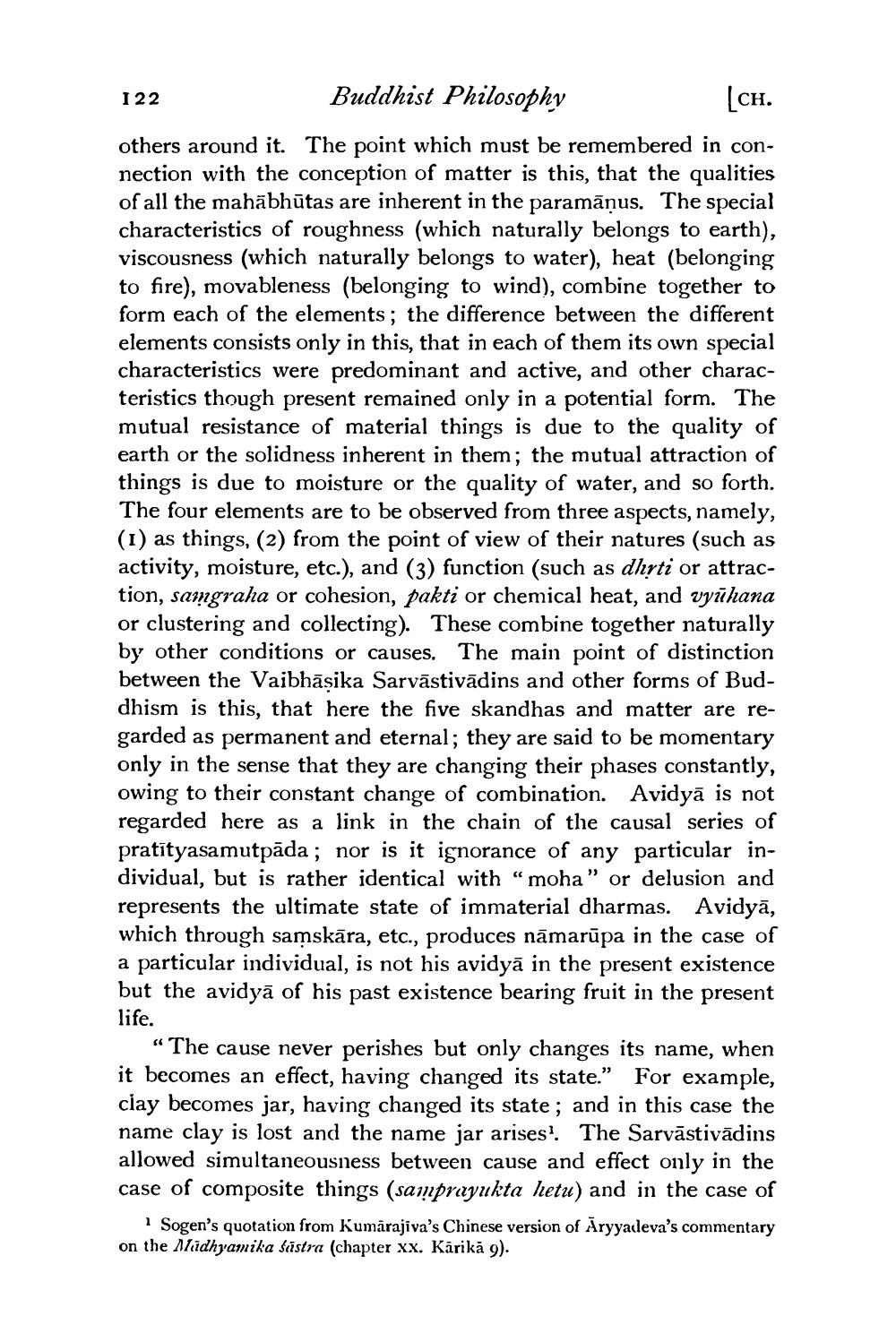________________
Buddhist Philosophy
[CH.
others around it. The point which must be remembered in connection with the conception of matter is this, that the qualities of all the mahābhūtas are inherent in the paramāņus. The special characteristics of roughness (which naturally belongs to earth), viscousness (which naturally belongs to water), heat (belonging to fire), movableness (belonging to wind), combine together to form each of the elements; the difference between the different elements consists only in this, that in each of them its own special characteristics were predominant and active, and other characteristics though present remained only in a potential form. The mutual resistance of material things is due to the quality of earth or the solidness inherent in them; the mutual attraction of things is due to moisture or the quality of water, and so forth. The four elements are to be observed from three aspects, namely, (1) as things, (2) from the point of view of their natures (such as activity, moisture, etc.), and (3) function (such as dhrti or attraction, samgraha or cohesion, pakti or chemical heat, and vyuhana or clustering and collecting). These combine together naturally by other conditions or causes. The main point of distinction between the Vaibhāṣika Sarvāstivādins and other forms of Buddhism is this, that here the five skandhas and matter are regarded as permanent and eternal; they are said to be momentary only in the sense that they are changing their phases constantly, owing to their constant change of combination. Avidya is not regarded here as a link in the chain of the causal series of pratītyasamutpāda; nor is it ignorance of any particular individual, but is rather identical with "moha or delusion and represents the ultimate state of immaterial dharmas. Avidyā, which through samskāra, etc., produces nāmarūpa in the case of a particular individual, is not his avidyā in the present existence but the avidya of his past existence bearing fruit in the present life.
122
"The cause never perishes but only changes its name, when it becomes an effect, having changed its state." For example, clay becomes jar, having changed its state; and in this case the name clay is lost and the name jar arises1. The Sarvāstivādins allowed simultaneousness between cause and effect only in the case of composite things (samprayukta hetu) and in the case of
1 Sogen's quotation from Kumarajiva's Chinese version of Aryyadeva's commentary on the Madhyamika sastra (chapter XX. Kārikā 9).




